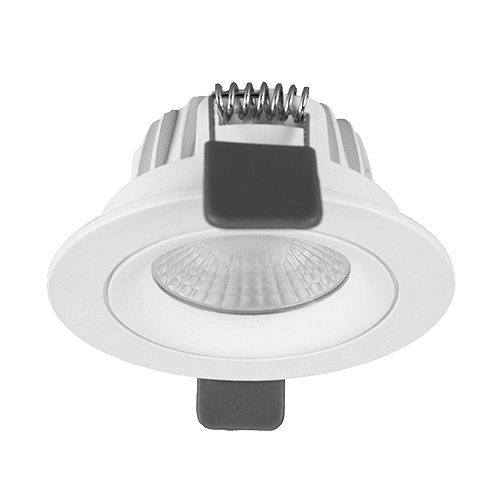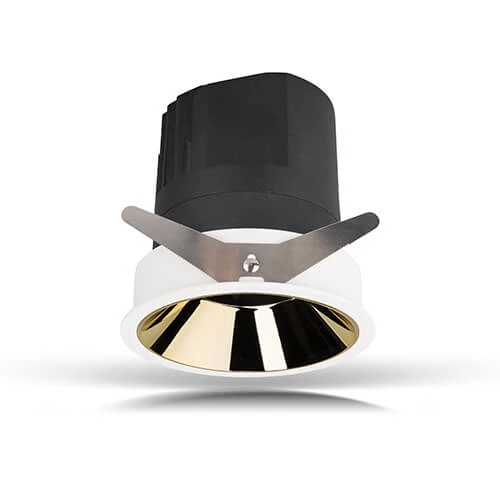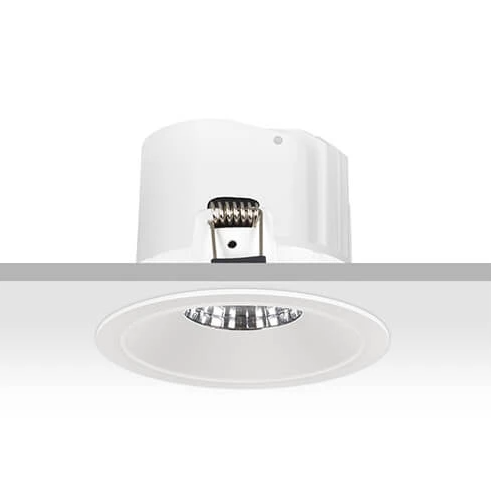Recessed lighting has become increasingly popular in modern interior design due to its sleek and minimalist appeal. It offers a versatile and efficient way to light up a space without the need for bulky fixtures. However, like any electrical installation, recessed lighting must adhere to certain guidelines and rules to ensure safety and optimal performance. In this article, we will explore the key rules and considerations for installing recessed lighting.
The proper placement and spacing of recessed lights is crucial for achieving balanced and uniform lighting throughout the room. A general rule of thumb is to position recessed lights three feet away from the walls and space them apart at a distance equal to or slightly less than their ceiling height. For example, if your ceiling is eight feet high, the recessed lights should be spaced approximately six to eight feet apart.
Additionally, consider the function of the room when determining the placement of recessed lights. In areas where focused lighting is needed, such as kitchen countertops or artwork displays, lights should be placed closer together. On the other hand, in spaces where more ambient lighting is desired, like living rooms or bedrooms, lights can be spread out more.
The type of ceiling plays a significant role in the installation of recessed lighting. There are three common ceiling types: drywall, suspended, and open. For drywall or suspended ceilings, recessed lights can be easily installed. However, open ceilings, such as those with exposed beams or rafters, may require additional planning and modifications.
Another essential consideration is insulation. If you have insulation in your ceiling, it is crucial to choose recessed lights that are labeled as "IC-rated" (insulation contact) to prevent the risk of overheating. IC-rated lights are specially designed to be installed in direct contact with insulation materials without causing a fire hazard.
When selecting recessed lighting, it is important to consider the appropriate wattage for the space. The wattage should be chosen based on the room size, ceiling height, and intended lighting effect. Higher ceilings may require higher wattage to achieve adequate brightness, while lower ceilings may require lower wattage to avoid overpowering the room.
Additionally, the trim selection can significantly impact the final aesthetic of the space. There are various trim options available, including baffle, reflector, and adjustable trims. Each trim type offers different lighting effects and distribution. For example, a baffle trim reduces glare, a reflector trim maximizes light output, and an adjustable trim allows for customizable beam angles.
Proper wiring and connections are crucial for the safe and reliable operation of recessed lighting. It is recommended to consult a licensed electrician for the installation process, especially if you are not familiar with electrical work.
Ensure that the wiring is compatible with the type of recessed lights you are using. Most recessed lights use standard 120-volt household wiring. However, some specialized options, such as low-voltage or LED recessed lights, may require different wiring and transformers.
Dimming capabilities and control options are desirable features for recessed lighting, as they offer flexibility in creating different moods and ambiance in a room. When installing dimmable recessed lights, ensure that your dimmer switch is compatible with the type of lights you have chosen.
Furthermore, consider incorporating smart home systems or remote controls for convenient operation and energy efficiency. These systems allow you to control your recessed lighting remotely, set timers, or integrate with voice-activated assistants for a seamless smart lighting experience.
In conclusion, the installation of recessed lighting requires careful planning, adherence to guidelines, and consideration of various factors such as placement, ceiling type, wattage, trim selection, wiring, and control options. By following the rules and guidelines outlined in this article, you can ensure a safe and aesthetically pleasing installation of recessed lighting in your space. Always consult a professional if you are unsure or need assistance with any electrical work.
 HK international lighting fair(Autumn Ed
HK international lighting fair(Autumn Ed
 What Type of Downlight Is Suitable for H
What Type of Downlight Is Suitable for H
 What Makes Recessed Down Lights Ideal fo
What Makes Recessed Down Lights Ideal fo
 Enhancing Outdoor Lighting with IP65 Rec
Enhancing Outdoor Lighting with IP65 Rec